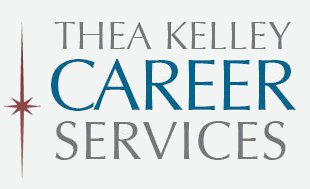 In today’s gig economy, freelancing is much more common than it used to be. It can be a great way to fill the gap after leaving a job. So make sure you know how to list freelance work on a resume.
In today’s gig economy, freelancing is much more common than it used to be. It can be a great way to fill the gap after leaving a job. So make sure you know how to list freelance work on a resume.
Are recruiters skeptical of consulting and freelancing work on resumes and LinkedIn profiles? Sometimes. Too many unemployed job seekers use “freelance” or “consultant” gigs to cover their current unemployment when in fact their “consulting” experience is as thin as the emperor’s new clothes. So make sure you do it right.
Here’s how to list freelance work on your resume – credibly.
1: First, get clients.
If you want it taken seriously, be serious. Do what it takes to get business. It’s fine to start with some work for a family member, but go beyond that. Once you have a decent-sized clientele, list them on your resume, or summarize with a phrase like “several small retail businesses in the Seattle-Tacoma area.” (Dictionary.com defines “several” as “more than two but fewer than many.”)
You can include some pro bono clients in your list, but if they’re all pro bono most people wouldn’t consider it to be a business.
2: Look good online.
Develop a professional-looking online presence, including a website. Give your business a name. A simple solution is your own name plus a descriptive term: “Terry Lee Marketing.” Get a good profile photo. (Amateur photos can look good; just google up some how-to’s and take at least a couple dozen shots so you have plenty of choices.) Don’t neglect social proof: actively seek testimonials, especially published ones like LinkedIn recommendations and Yelp reviews.
All of this demonstrates to employers that you’re energetic, hard-working, a self starter, in demand, and so on – in short, the kind of person they want to hire.
3: Be able to show results.
Too often, consultants have no idea how their work benefited a client over time, so they lack testimonials and are unable to answer interview questions about the success and impact of their work. You might want to make it part of your consulting agreements that the client will complete a follow-up questionnaire immediately after the project and a couple months later. Make it a priority.
4: Develop and share work samples if possible.
Show them off on your website, in your LinkedIn profile and other social media, and at interviews.
5. Pull it all together on your resume.
Let’s say during a certain time period you’ve done some free-lancing through a platform like Upwork or Fiverr, a little volunteering, a short contract gig through an agency, and maybe some blogging or speaking, all related to the same industry or occupation. Listing a lot of little “jobs” on your resume could look cluttered or insubstantial. Instead, try treating all of these as projects of your freelance business.
Keep your eyes on the prize.
If you’re still looking for a regular job you’ll need to set aside time for direct job search activities such as networking, applying to jobs and going to interviews. But your freelancing can also advance your job search, by providing new connections, visibility and experience.
When you get a full-time job . . .
When you land your new job and put your business on the shelf, make sure you retain good relationships, records and files so you can revive it all later if needed. Or you can keep it going as a “side hustle,” an ongoing source of extra cash and income security, tax deductions, networking, career development and an opportunity to flex expertise-muscles you may not use on your regular job.
Now you know how to list freelance work on your resume – in a way that really works! (This post was originally published in 2018 and has been updated.)

